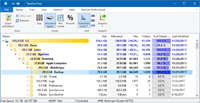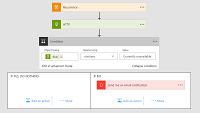According to a report by DisplayBank in 2008 over 14.9 million netbooks were sold with that number expected to almost double in 2009. Netbooks have become a great secondary PC when you want a very portable and low cost way to do basic computing. Many ship with Windows XP home edition but that is just not as fun and helpful to use as Windows 7.
Like many of you I loaded Windows 7 on my netbook and it performed just OK. It provided a huge performance improvement over Windows Vista but was not as snappy as I wanted. The key to speeding up Windows 7 on a netbook with limited resources is to turn off and disable features that you don’t need. After all, it’s a netbook and there are many Windows components that will never be used. Additionally, disabling un-needed components will extend your battery life since fewer processes will be using the CPU running in the background.
Fine Tune Visual Settings
The Windows 7 eye candy is the main cause of GUI slowness. While my netbook has a decent graphics card that can display Aero Glass it can be choppy at times. Follow these steps to improve the performance of the interface:
Click on the Start Button and type in adjust the appearance and hit Enter. This will load the Visual Effects performance options.

On this screen I suggest disabling the following settings by removing the check:
- Animate controls and elements inside windows
- Animate windows when minimizing and maximizing
- Enable transparent glass
- Fade or slide menus into view
- Fade or slide ToolTips into view
- Fade out menu items after clicking
- Show shadows under windows (this may be worth the performance hit for some)
- show thumbnails instead of icons
- show translucent selection rectangle
- Show window contents while dragging
- Slide open combo boxes
Click OK when you are finished.
Remove Startup Programs
Nothing wastes resources more is startup programs that you don’t need. Click on the Start Button and type in msconfig and hit Enter.
When the System Configuration utility is loaded click on the Startup tab.

Remove the check next to any applications you don’t need and click OK.
Disable Services
Now it’s time to trim the Windows services running in the background of your computer.
Click on the Start Button and type in services.msc and hit Enter.

When the Services management console is shown you can stop and disable services by selecting the service, right clicking and selecting Properties. Then change the Startup type to Disabled and hit the Stop button. Finally click OK to return to the Services management console.
I recommend disabling the following services on a netbook:
- Block Level Backup Engine Service
- Bonjour Service (from iTunes)
- Certificate Propagation
- Group Policy Client (if not on domain)
- HomeGroup Listener
- HomeGroup Provider
- Offline Files
- Portable Device Enumerator Service
- Security Center*
- Software Protection (make sure you activate Windows first)
- SSDP Discovery
- Windows Defender*
- Windows Media Player Network Sharing Service
- Windows Search
Keep in mind that if you use any of these services or applications that depend on them they will no longer function. E.g. if you are a homegroup user don’t disable the Homegroup Provider.
* Make sure you use other security software if you disable these services.
Install More RAM
There is really no good substitute to having plenty of ram in a computer. You can use ReadyBoost but with memory prices so cheap why not just buy more. I purchased a 2GB chip for my netbook for $16 (hopefully the mail-in rebate will come through).
The popular Intel Atom processor netbooks use the Mobile Intel 945GSE Express Chipset that has a max of 2GB of ram supported. The amount of expansion slots or if your netbook even has one depends on the vendor and model of your netbook.
I suggest picking up a 2GB stick of PC2-5300 DDR2 at 667 Mhz on a 200 pin SO-DIMM. That is the type of memory required for the Mobile Intel 945GSE Express Chipset.
Installing is simple. Lenovo even has a video for the Ideapad S10.



